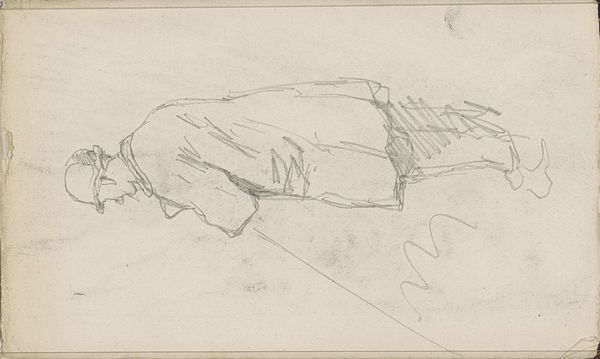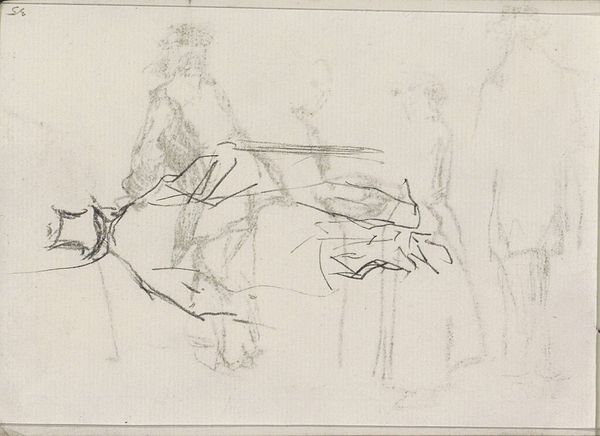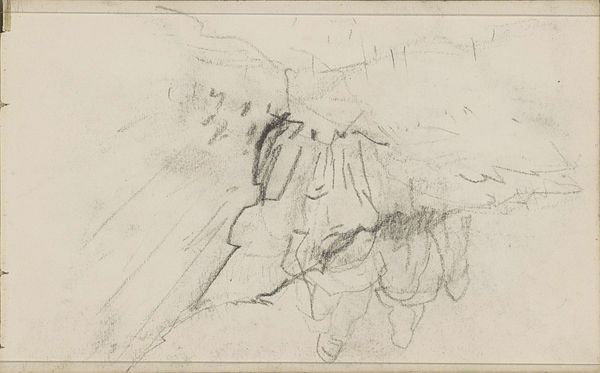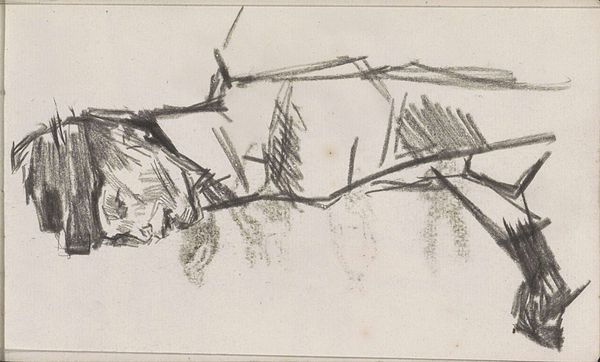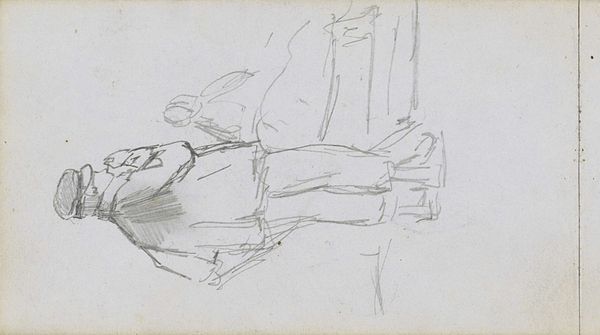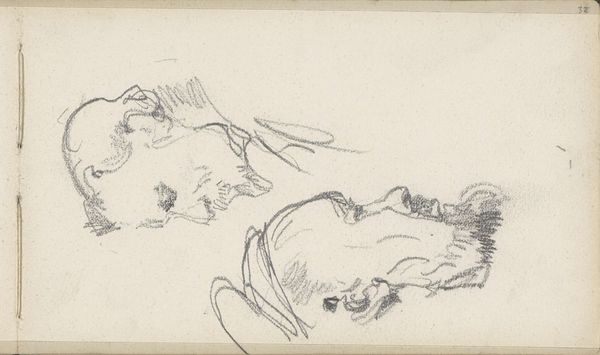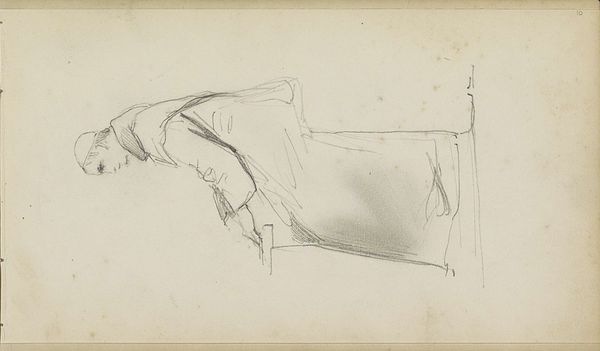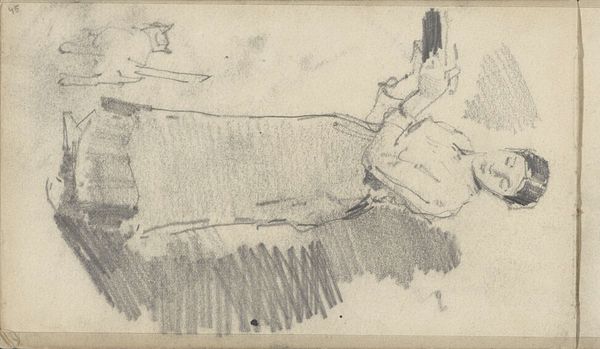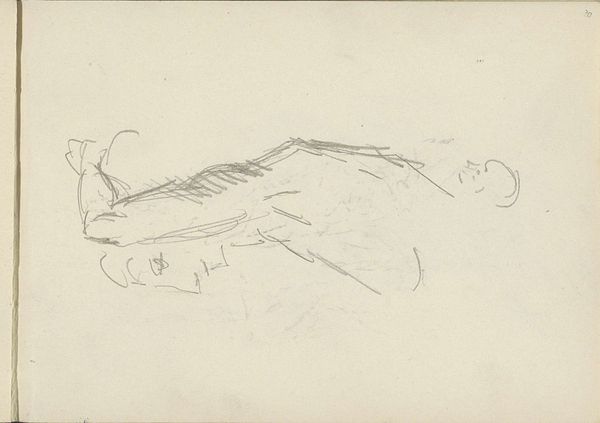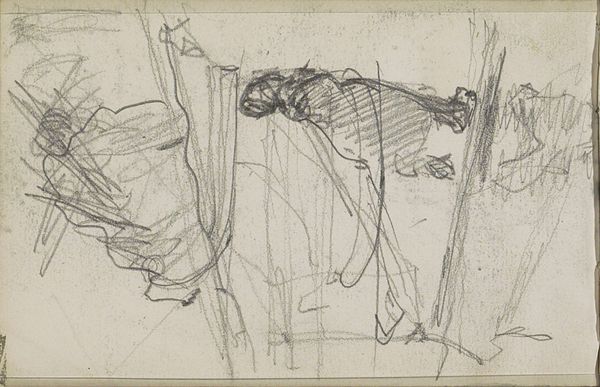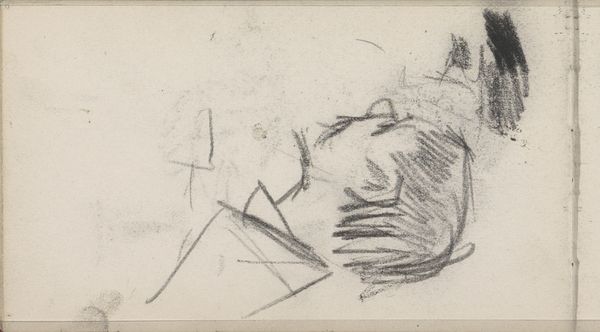
Copyright: Rijks Museum: Open Domain
Curator: This intriguing piece, entitled "Vrouw met een voorwerp in haar handen," or "Woman with an object in her hands," is attributed to Isaac Israels and was created sometime between 1875 and 1934. It’s a drawing done with pencil on paper and is currently housed here at the Rijksmuseum. What are your initial thoughts? Editor: My first thought is... fleeting. Like capturing a half-remembered dream. The strokes are so quick, almost frantic, giving a sense of transience. I find it quite intimate, a whispered secret. Curator: Yes, it has a dreamlike quality. The medium lends itself well to that sense of immediacy. A pencil sketch—it’s as if we are looking at a quick study, perhaps a preparatory piece for a larger painting, a raw glimpse into Israels’ artistic process. The lines, seemingly rough, construct form and emotion, embodying an almost visceral response to the subject. Note also, the somewhat obscure "object in her hands," inviting interpretations as it adds layers to the woman’s narrative. Editor: Absolutely. It feels deeply personal, not staged. Is she holding a letter? Or is it some other keepsake that she contemplates in a moment of quiet contemplation? It reminds me a little of the way Degas captured dancers—candidly, and unexpectedly, mid-motion or thought. There's definitely a hint of Impressionism in its capture of fleeting moments. Curator: You touch upon something important about the impressionistic influence apparent in the artist's willingness to capture everyday life rather than to craft formally posed depictions. And thinking of symbols—paper and letters signify communications; consider the cultural connotations present with literacy and letter writing in the early 20th century. Editor: Right. I am drawn into trying to fill in the missing context. Is this a moment of joy? Is it grief? And because Israels gives us so little concrete information, the scene becomes ripe for projections. It makes me wonder what I might do if someone sketched me while I was in the midst of my own little, private world. Curator: Well, it's an exercise in cultural imagination, isn't it? What are our associations, and what is our story to this visual trace of someone's moment long gone? Editor: Exactly! It is interesting how, in leaving the picture somewhat incomplete, Israels has made the artwork somehow feel universally complete. Curator: A beautiful way to phrase the effect; perhaps we are not meant to completely solve the image. Perhaps this work instead is to show us that all portraits invite collaboration to emerge fully.
Comments
No comments
Be the first to comment and join the conversation on the ultimate creative platform.
